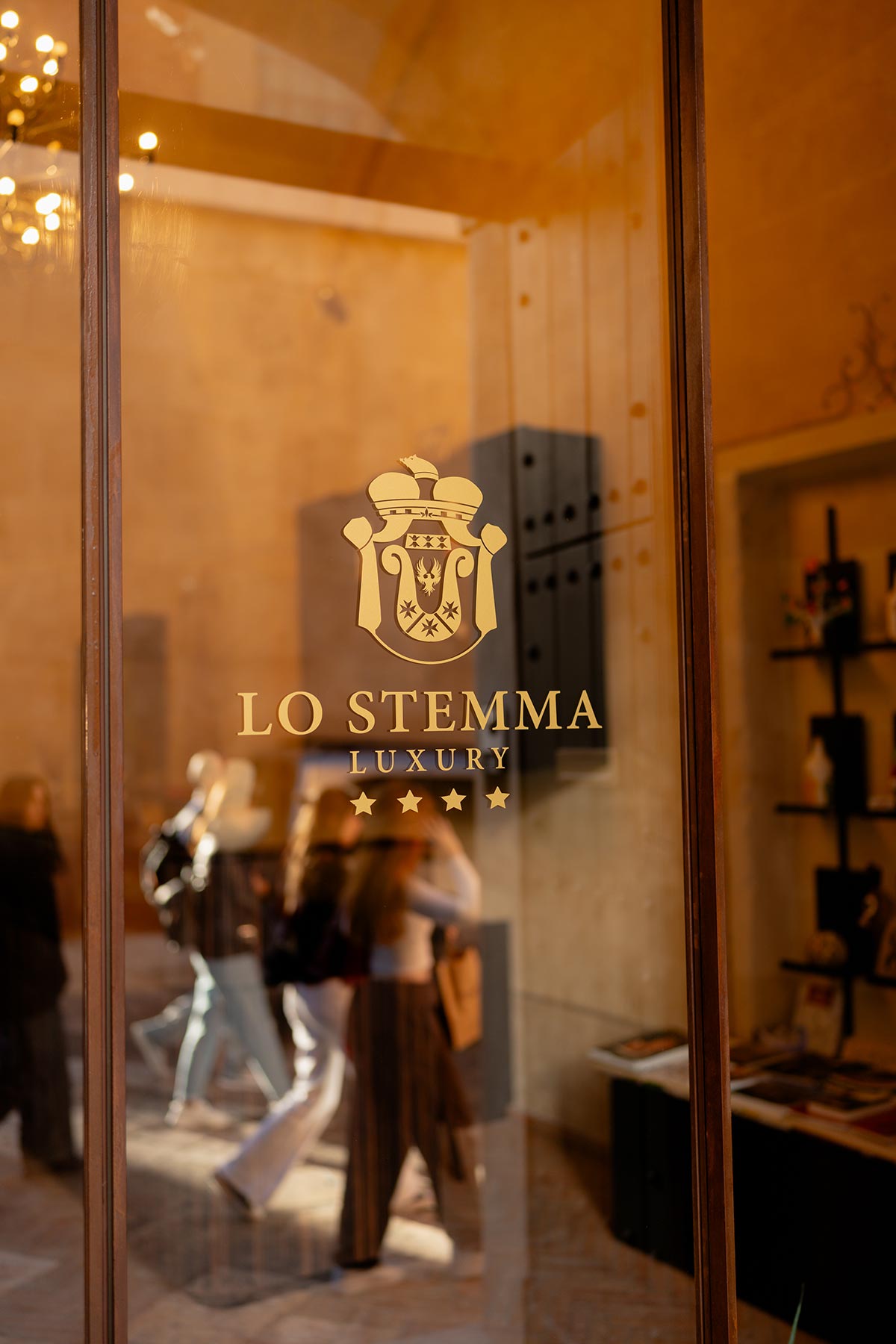THE MALVINNI MALVEZZI PALACE
IN VIA DELLE BECCHERIE
Is located on the edge of the Sasso Barisano. This is close to one of the main access gates of the city, the now dismantled Porta Pepice. Behind the complex is the urban administrative center, the Palazzo Malvinni Malvezzi on via delle beccherie which occupies a central position in Matera.The Malvinni Malvezzi family has been one of the oldest, wealthiest and most powerful in the city of Matera for centuries, holders of countless properties, both in urban and rural areas
Their supporters occupied the highest positions, were related to all the local and aristocratic families of the Kingdom of Naples. Including numerous soldiers in the ranks of armies of the various rulers who followed one another, and members of the order of the Jerusalem Priory since 1572, as well as esteemed religious personnel and cardinals. The original branch of the Matera family starts with Captain Luzio Malvindi, who over time changed to Malvinni, of Salento origins; he moved to Matera at the beginning of the 15th century, and then joined the Malvezzi dynasty, an influential family of Bolognese origin, and took on the composite name, also represented on the family coat of arms.In 1784 Domenico Malvinni Malvezzi, already a land owner, purchased the fiefdom of Santa Candida in the Teramo area from the Royal Chamber, thus obtaining the title of Duke of Santa Candida.
There is no definitive documentation divulging the origins of the palace in Via delle Beccherie, although it appears prominently with its characteristic triangular roofs, in the city map frescoed in the Hall of Coats of Arms of the archbishop’s palace of Matera, dating back to 1709.
It’s reasonable to assume, given its central position, that it was made as a warehouse for the Dukes of Santa Candida, and then expanded over time for new uses, such as becoming a residence.
The fact that it was built and owned by the Malvinni Malvezzi family of Matera is only known thanks to specific documentation, such as the deed of sale of its last owner Maria Malvinni Malvezzi, drawn up in Matera in 1947, as well as from the noble coat of arms that dominates the ancient entrance portal.There are also some texts that establish ownership, like the cadastral tables of 1950, and looking further back, the urban public registry of 1875, the buildings registry of 1871, and 1754 Onciario Cadastre.
One can reasonably hypothesize that in reality the building is at least a century and a half older, both because, as a warehouse, there is no published documentation left, and because of the Church of San Marco alle Beccherie.The construction in 1665 by the cleric Giovanni Maria Melvindi of the church of San Marco delli Melvindi after the Porta Pepice bridge is known as it replaced a previous hypogeum dedicated to the same saint, in masonry and equipped with a bell tower. Once a month a mass was celebrated in remembrance of the soul of Captain Marco Melvindi, brother or cousin of the same name of the cleric.The church may have been built on land owned by the ducal family, or at the service of the adjacent structure, not only used as a warehouse, but as a residence, albeit secondary to the ducal one in front of the cathedral, and already occupied in the 15th century.
The palace took on its current shape only in the 19th century, when the buildings already in the family’s possession, including the church of San Marco alle beccherie which was deconsecrated at the end of the 1700s next to the storage rooms, were expanded through new acquisitions from the duke Giulio Malvezzi. Yet, during the 20th century, the building was remodeled again, divided into rooms, rented and sold, to then become the headquarters of the Banca Popolare del Materano and also housed the premises of a school.
A NEW HISTORY
OF ANCIENT LIFE
Today, after almost ten years of work and restoration carried out while respecting its imposing age, the Malvinni Malvezzi palace in Via delle Beccherie returns to open its doors now as the Stemma Luxury Hotel.A building that has passed through time, observing it silently, welcoming itself to different purposes, people and cultures, continuously evolving. Now returning to welcome the public, showing itself in its new guise yet maintaining the dignity that has stood though so many centuries.
Of the vestiges from the past remain part of the original staircase found beneath the foundations of the lift, a magnificent ceiling decorated with flower baskets and pastel colored squares, and the traces of a gallery that crossed one half of it. Splendid precious wrought iron railings nailed by hand, made for the stairways and state balconies stand overlooking Via delle Beccherie, part of which today make up the parapets of the two-storey rooms.


